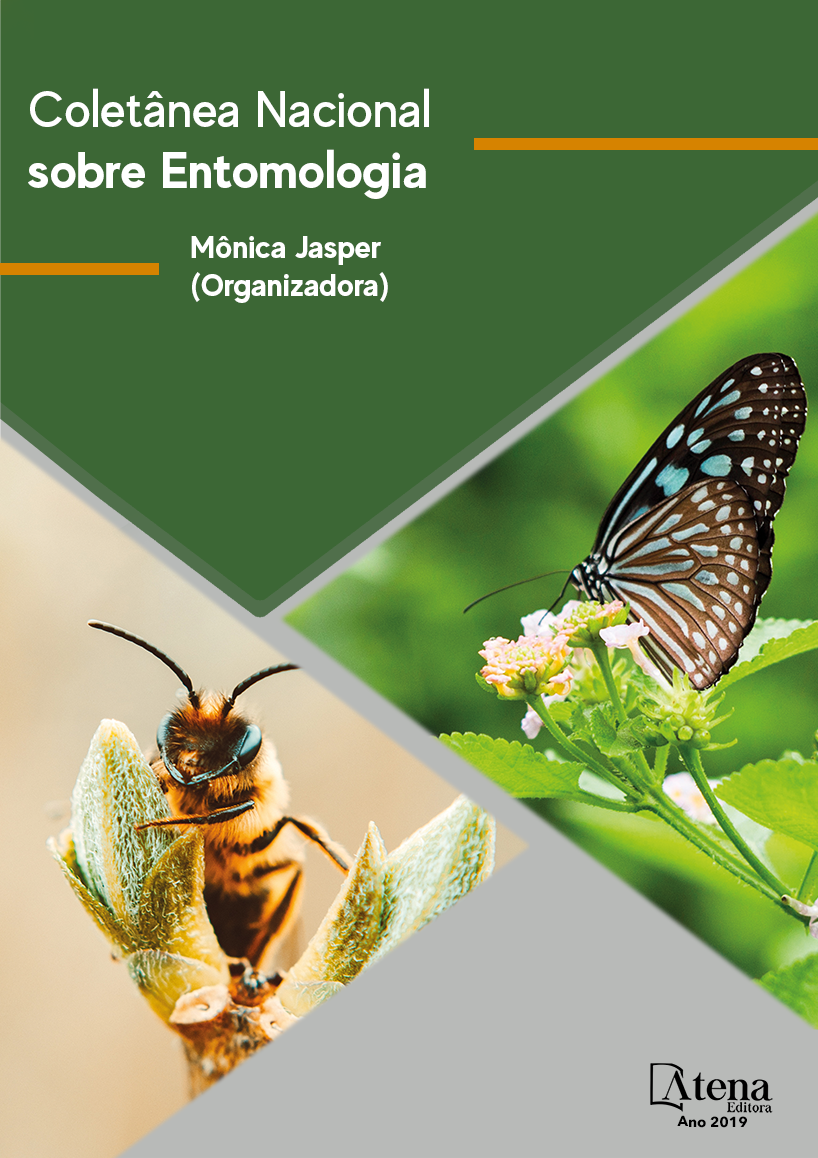
RECURSOS ALIMENTARES DE Melipona quadrifasciata quadrifasciata (HYMENOPTERA MELIPONINAE) NA RESTINGA DO SUL DE SANTA CATARINA, BRASIL
Estudos sobre os recursos
polínicos utilizados por abelhas sociais
nativas em regiões naturais brasileiras ainda
são escassos, porém o conhecimento dessas
relações é essencial para fornecer informações
que possibilitem subsidiar programas de
conservação dessas abelhas e para assegurar
a polinização das espécies vegetais. O objetivo
deste trabalho foi identificar os principais
recursos polínicos coletados pela Melipona
quadrifasciata quadrifasciata (Lepeletier, 1836),
em uma área de restinga do município de
Jaguaruna, Santa Catarina. A área estudada
encontra-se numa matriz predominantemente
agrícola, isolada de outros remanescentes e
circundada por áreas de extração de areia e
cultivo de eucalipto. As coletas foram realizadas
mensalmente, no período matutino, entre
janeiro a setembro de 2017. Foram amostrados
pólens dos potes de alimento abertos do interior
de uma colônia e foram coletados os grãos de
pólen contidos nas corbículas de 10 abelhas
que estavam retornando à sua colônia. Após
análise polínica, foram identificadas 18 espécies
vegetais, pertencentes a 10 famílias botânicas.
Myrtaceae e Asteraceae foram as principais
fontes de pólen exploradas, indicando a
importância destes recursos para a manutenção
da espécie de abelhas no ambiente estudado.
Eucalyptus spp. apresentou a maior frequência
e o maior valor de abundância nas amostras
polínicas, apontando para a necessidade de
realizar estudos que visam desvendar se
essa espécie exótica está prejudicando a
polinização das espécies vegetais nativas,
gerando competição por polinizadores. A
baixa riqueza de espécies fornecedoras de
fontes polínicas para a mandaçaia observada
neste estudo demonstra o alto grau de
antropização da restinga, que resultou na
diminuição da flora nativa.
RECURSOS ALIMENTARES DE Melipona quadrifasciata quadrifasciata (HYMENOPTERA MELIPONINAE) NA RESTINGA DO SUL DE SANTA CATARINA, BRASIL
-
DOI: 10.22533/at.ed.5041909071
-
Palavras-chave: Abelha sem ferrão; Meliponíneos; Melissopalinologia; Conservação
-
Keywords: Stingless bee; Meliponines; Melissopalynology; Conservation
-
Abstract:
Studies on the pollen resources
used by native bees in Brazilian natural
regions are still scarce, but knowledge of these
relationships is essential to provide information
to support bee conservation programs and to
ensure plant species pollination. The aim of this
study was to identify the main pollen resources collected by Melipona quadrifasciata
quadrifasciata (Lepeletier, 1836), in a restinga area of the municipality of Jaguaruna,
Santa Catarina. The studied area is inserted in a predominantly agricultural matrix,
isolated from other remnants and surrounded by areas of sand extraction and eucalyptus
cultivation. The samples were carried out monthly, in the morning, between January
and September of 2017. Pollen was sampled from all open food pots of the interior
of a colony and from the scopes of ten bees that returned to their colony. After pollen
analysis, 18 plant species belonging to ten botanical families were identified. Myrtaceae
and Asteraceae were the main pollen sources explored, pointing out the importance
of these plants for the maintenance of the bee species in the studied area. Eucalyptus
sp. showed the highest frequency and the highest value of abundance in the pollen
samples, indicating the need for future studies to unveil if this exotic species is harming
the pollination of the native plant species, generating competition for pollinators. The
low richness of species supplying pollen sources for the bee species observed in the
study area demonstrates the high degree of anthropization of the restinga, which
resulted in the decrease of the native flora.
-
Número de páginas: 15
- Adrielle do Nascimento Barcelos
- Birgit Harter-Marques


